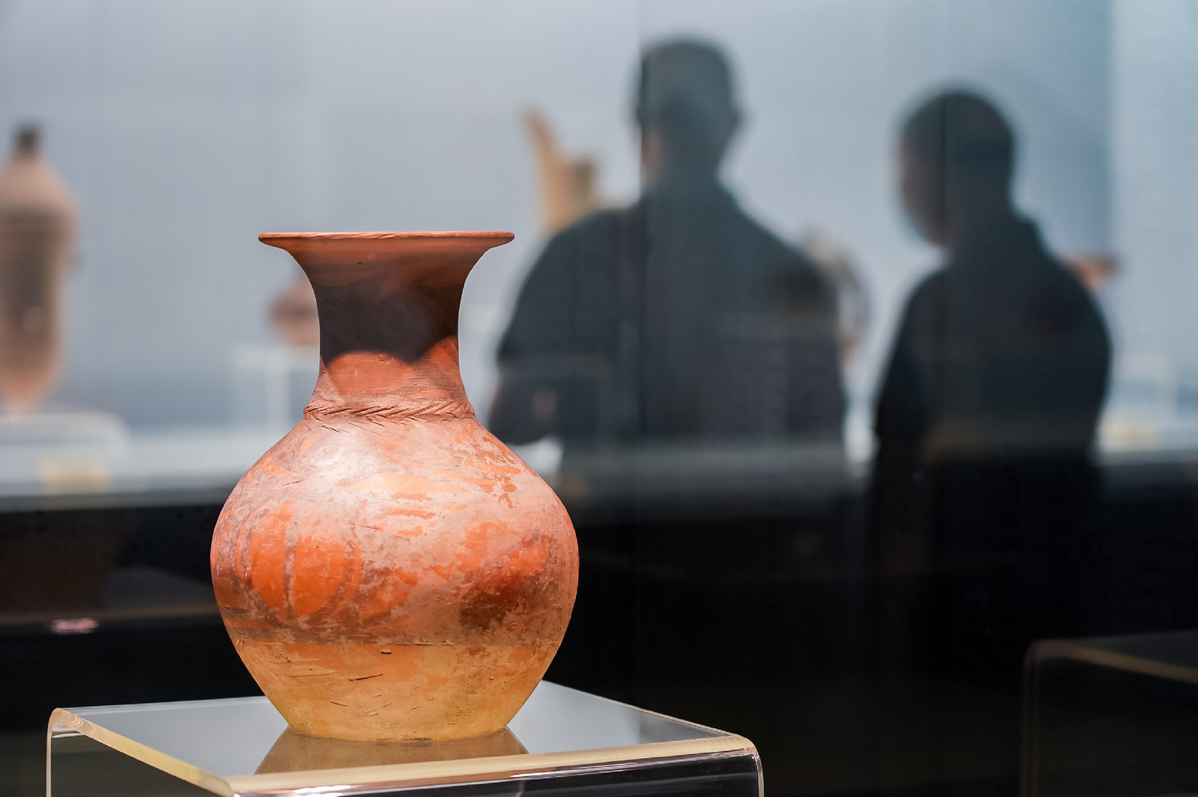Prehistoric painted pottery in global limelight in northwest China
 0 Comment(s)
0 Comment(s) Print
Print E-mail Xinhua, August 4, 2021
E-mail Xinhua, August 4, 2021
Prehistoric painted pottery has recently gained much traction from archaeological experts home and abroad as the ongoing fifth Majiayao Cultural Festival boosts international research engagement and cooperation.

The one-month event kicked off on July 20 in Dingxi City, northwest China's Gansu Province, featuring symposiums, exhibitions, and field trips to local archaeological sites.
The festival was named after one of the renowned discoveries in the province -- the Majiayao culture -- which mainly developed in the upper reaches of the Yellow River and its tributaries. With more than 5,000 years of history, the Majiayao also witnessed the glories of ancient China's painted pottery.
"Scholars have found close similarities in prehistoric painted pottery between the Black Sea area and the upper reaches of the Yellow River," said Li Xinwei, a researcher with the Institute of Archaeology under the Chinese Academy of Social Sciences.
"Our joint research will focus on their potential relation and the reason why the two differed in their later development," added Li.
Li's institute has teamed up with the Romanian Academy of Science to excavate a painted pottery site in Gansu in search of new discoveries.
Due to the high similarity in the style and decoration of painted pottery in China and Romania previously, some archaeologists put forward the concept of "the painted pottery road." It refers to a possible corridor of early cultural communication between China and the West, which centered on painted pottery long before the Silk Road.
"Countries along the Silk Road have a lot in common in their painted pottery culture. The commonalities have laid a cultural foundation for the Silk Road formation," said Li.
China also plans to cooperate with Turkmenistan on relevant research. The joint research project will focus on the relations between the common patterns like sawtooth in the Namazga-Tepe culture and decorative designs, including cattle, sheep, and wheat in ancient China's Yangshao Culture.
International archaeological cooperation on prehistoric painted pottery enjoys a long history. In 1924, Swedish archaeologist Johan Gunnar Andersson first uncovered sophisticated painted pottery in various shapes in the Majiayao Village, Gansu.
Over the years, scholars and experts from institutes and universities worldwide, such as Harvard University and the University of Oxford, have conducted archaeological studies and exchanges with their Chinese counterparts in Majiayao.
"The Loess Plateau was like a crossroad where multiple civilizations converged in ancient times, bringing surprise gifts to the archaeology world," Li added.






Go to Forum >>0 Comment(s)